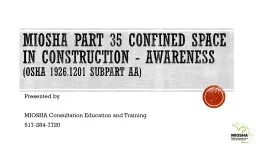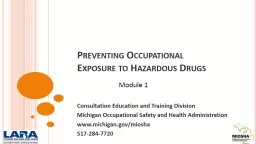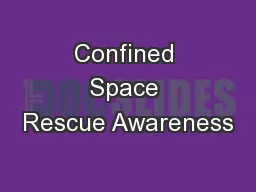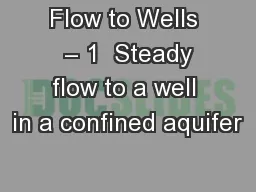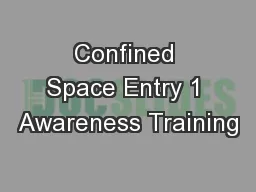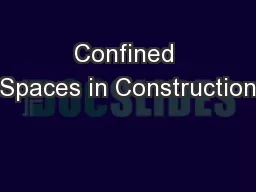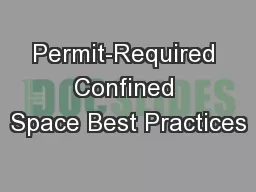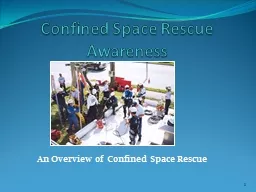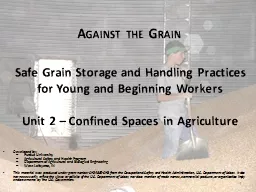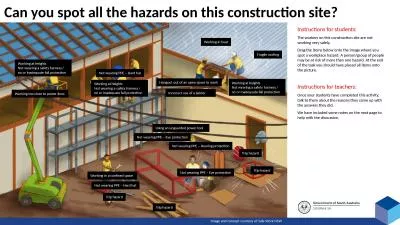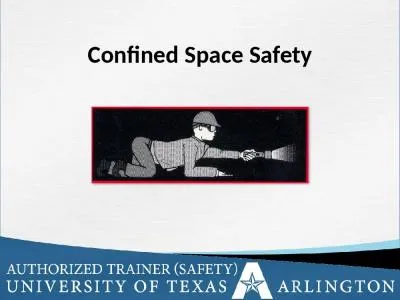PPT-MIOSHA Part 35 Confined Space in Construction - Awareness
Author : yoshiko-marsland | Published Date : 2017-04-02
OSHA 19261201 SubPart AA Presented by MIOSHA Consultation Education and Training 5172847720 Agenda Provide overview of the existing and new standards Describe
Presentation Embed Code
Download Presentation
Download Presentation The PPT/PDF document "MIOSHA Part 35 Confined Space in Constru..." is the property of its rightful owner. Permission is granted to download and print the materials on this website for personal, non-commercial use only, and to display it on your personal computer provided you do not modify the materials and that you retain all copyright notices contained in the materials. By downloading content from our website, you accept the terms of this agreement.
MIOSHA Part 35 Confined Space in Construction - Awareness: Transcript
Download Rules Of Document
"MIOSHA Part 35 Confined Space in Construction - Awareness"The content belongs to its owner. You may download and print it for personal use, without modification, and keep all copyright notices. By downloading, you agree to these terms.
Related Documents

